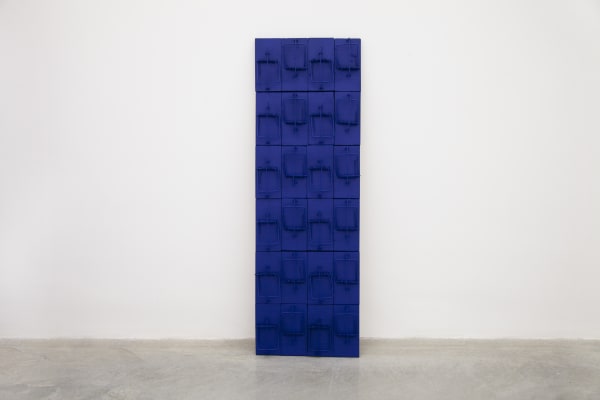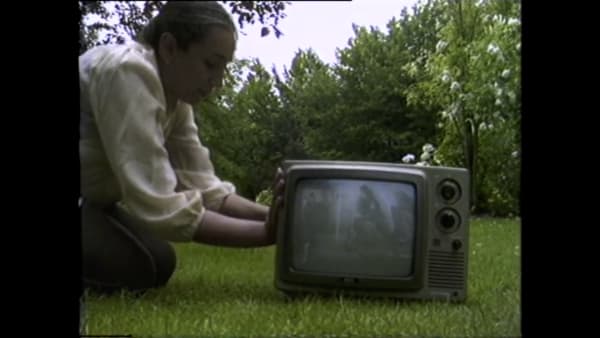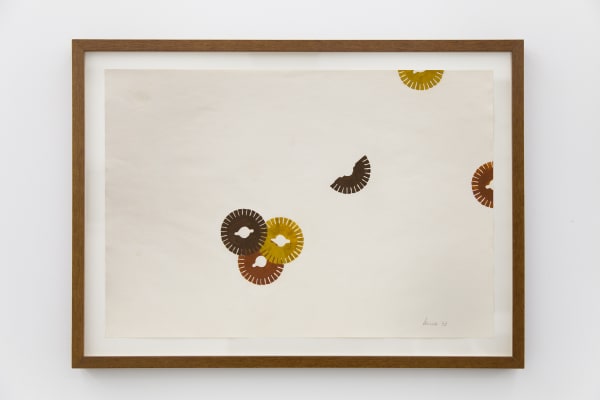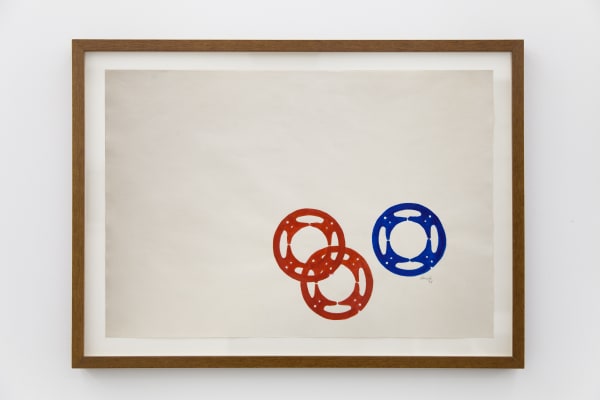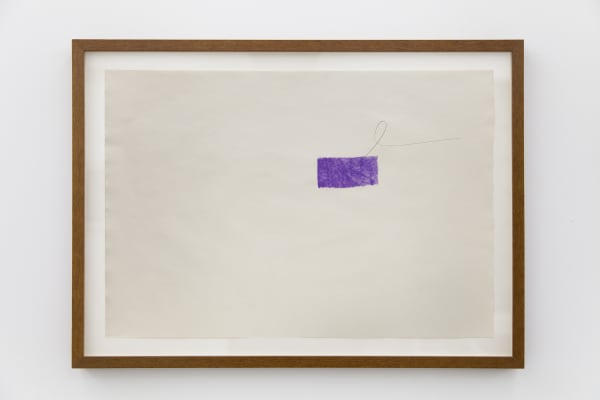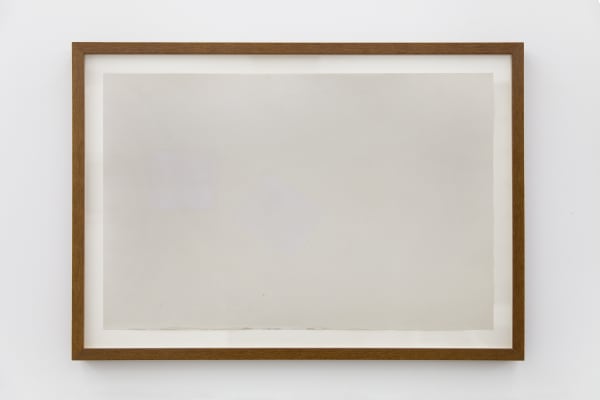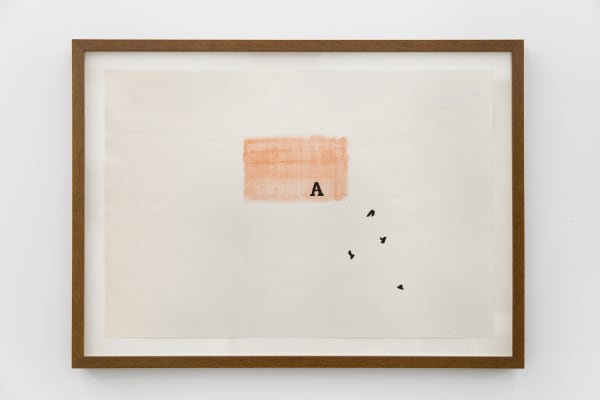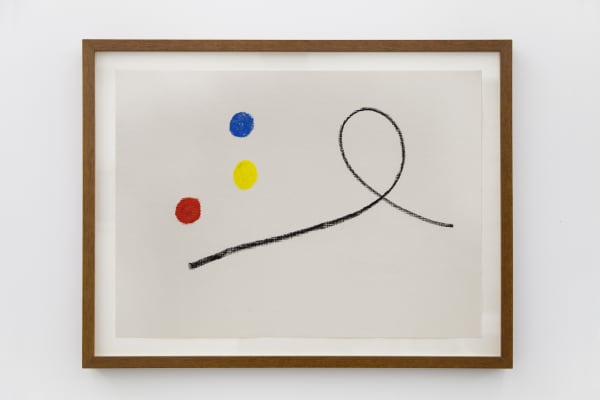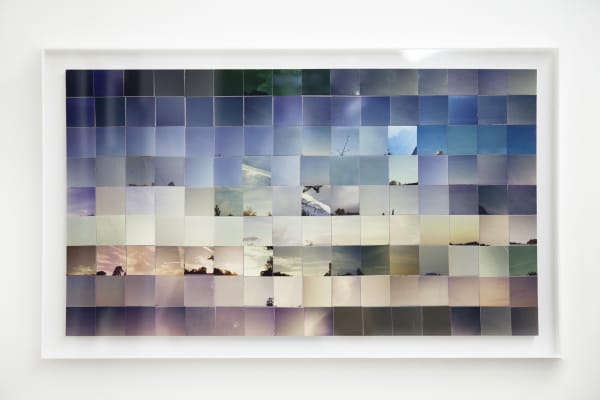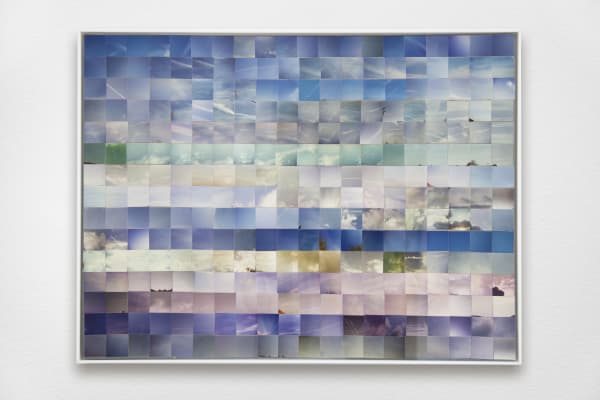Sonia Andrade: The place of return is always some other place
Galeria Athena is pleased to present The place of return is always some other place, by Sonia Andrade.
During one of the meetings I had with Sonia Andrade about this exhibition, she said she recalled sentences that could walk us through a title for it. Those were words written by Álvaro de Campos in his poem “Là-bas, je ne sais où”. The author describes a journey, a train station, departures and arrivals – his verses find a beautiful echo in the song “Encontros e despedidas” (“Encounters and farewells”), by Milton Nascimento. In the end of Campos’ poem, some verses caught our attention: “Partir! / Nunca voltarei. / Nunca voltarei porque nunca se volta. / O lugar a que se volta é sempre outro, / A gare a que se volta é outra. / Já não está a mesma gente, nem a mesma luz, nem a mesma filosofia” (“To leave! / I will never return. / I never will because one never does. / The place you return to is never the same, / The station of return is some other station. / The same people are no longer there, nor the same light, nor the same philosophy.”)
Part of the works exhibited here had already been defined, but after reading those verses, the way they would co-exist in the space gained another meaning. As the artist herself likes to say, time is the key element of her output, and this poem is all about time. The poet’s text reflects on coming back to somewhere and it updates Heraclitus’ words about the body, the river, and time: one does not enter the same place twice, as much as an artist and the viewer do not see the same work of art the same way at different points in time.
This exhibition has works that not only have different relations with the idea of time, but they were also created at different moments during Sonia Andrade’s researches. While some of them might already be known by those familiar with her career, others were initiated decades ago and only now did they take their final form to migrate from the studio-house to the exhibition space. Finally, other works were devised specially for the exhibition room. We decided not to hold an exhibition based exclusively on video – the medium to which the artist is most related due to her pioneering steps at video art and video installation. It seemed fair enough to think about an equation of languages that addressed time in different ways: photography, drawing, writing, and the creation of objects originated from the artist’s own collection.
Naufrágio (“Shipwreck”) is the installation that occupies the larger room at Galeria Athena – would that be a fish tank or a box? Alone at the center of the space, the object comprises pieces of glass, shards and entire pieces of a Japanese porcelain set. Who sank and how? This answer we do not have, but the installation seems to dialog with the memento mori tradition: allegoric images that remind us of death. Time passes by, the objects remain, water flows away, and we eventually turn into dust. In order for us to notice the presence of dust, nothing better than a space where emptiness is the primary element.
The other two rooms of the Gallery combine works of different scales and registers. As a common element, we can notice the importance of the relation between technical image and sequence. In O braço da artista (“The artist’s arm”), we see her body photographed several times and shown as a contact photographic sheet. Her arm bends and seems to play with the strength of any human body. When this work is related to her career, one cannot avoid recalling videos such as A morte do horror (“The death of horror”), where other ordinary actions are repeated and, when displayed in a sequence, they lead us to think about the situations so proposed: fragility, shouting, silence… gender? Maybe yes, but hardly as some sort of activism. Photography tries to freeze and document time, but the artist wishes to explore the fictional possibilities given by what is most familiar to her: her own body.
Suggesting narratives by sequencing images is also found in other works of this exhibition with a more handcrafted appeal. In Sob os céus (“Under the skies”), the artist cuts out photographs produced in Europe in 1979 and 1984, where the sky was remarkably present. Based on that material, sky mosaics were created and can be seen as an inventory of colors, temperatures and forms – pasted side by side, these photographs seem to make up a calendar, possibly getting close to the idea of a journal: collections of skies, collections of days and nights.
Something similar can be noticed in the series of books also displayed in the exhibition. Five small books show sets of images that create narratives with different interests as the pages are flipped – each one of them is dedicated to the analysis of the written language: accents, punctuation, letter, alphabet, and alphabet of removed letters. Each book is both an exhibit and a dissection of forms that constitute the written system of the Portuguese language through drawing. Sonia Andrade’s approach has a surgical precision that can be noted since her very first drawings from 1972 and that are shown for the first time in this exhibition. Sketches, gouache stains, forms reminding of pulleys and pieces of letters – the artist faced the white sheet of paper as a propositional challenge and created her first-ever images in an apparently unpretentious fashion.
All of us – both the public and the artist – turn our attention to these sheets of paper that are no longer those dating back forty-seven years. The world has spun so many times, the artist and her images have turned around the world so many times, and now the public will turn around her own world.
Let’s do it before the ship sinks and while we are still able to return to that place which is – fortunately! – always new whenever we are back.
Raphael Fonseca






